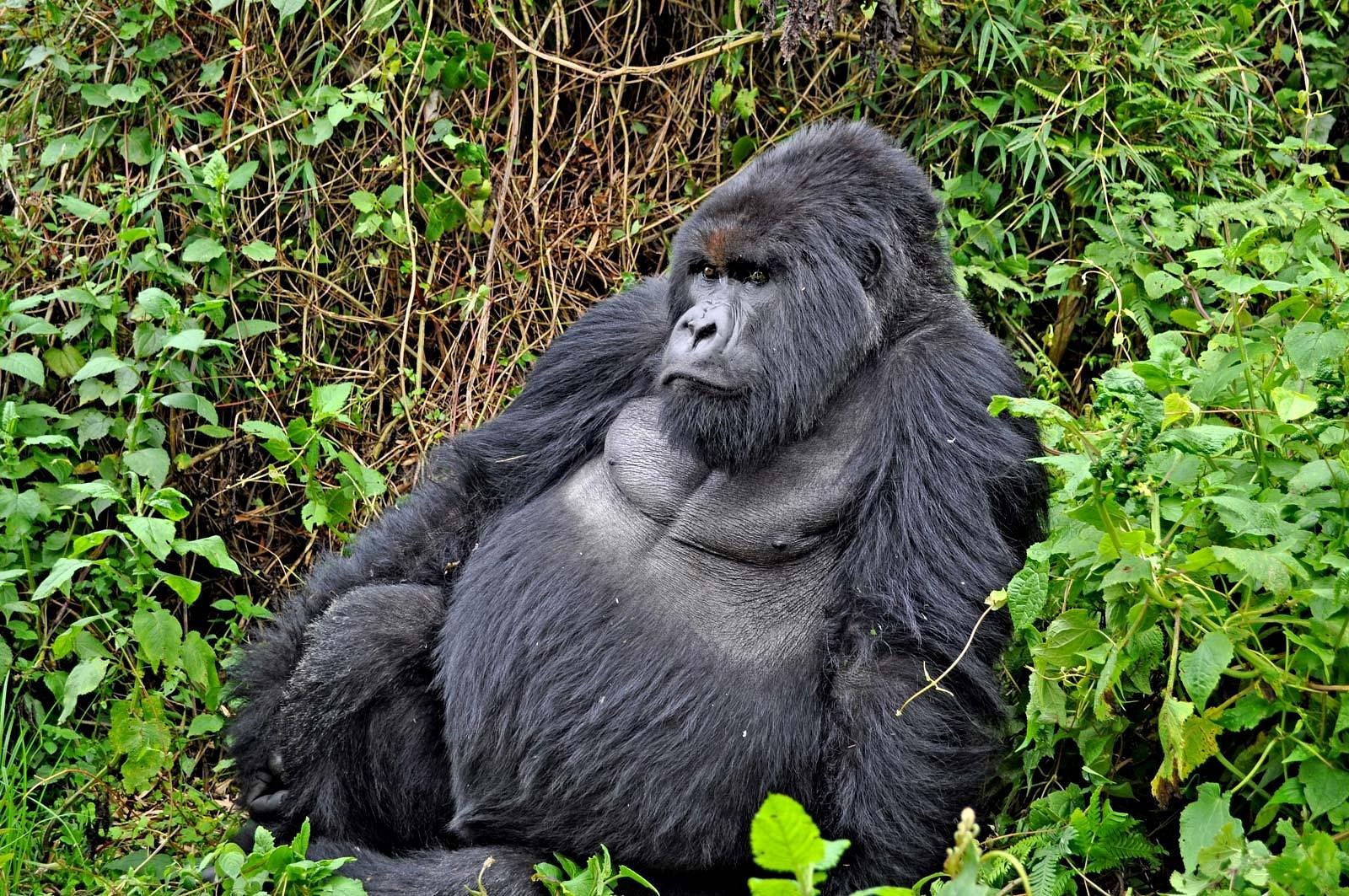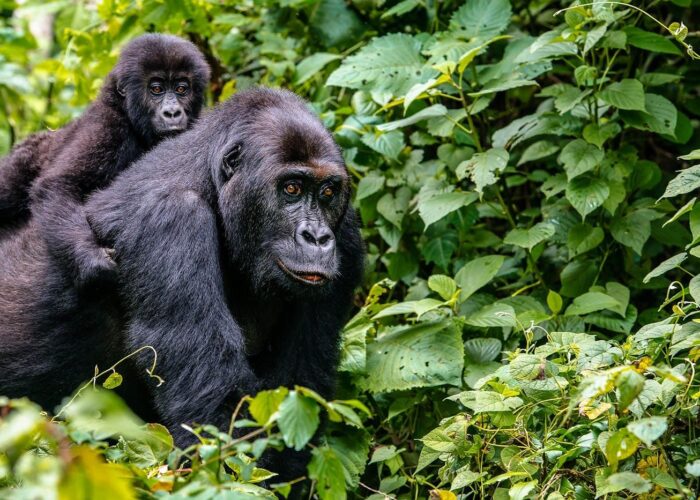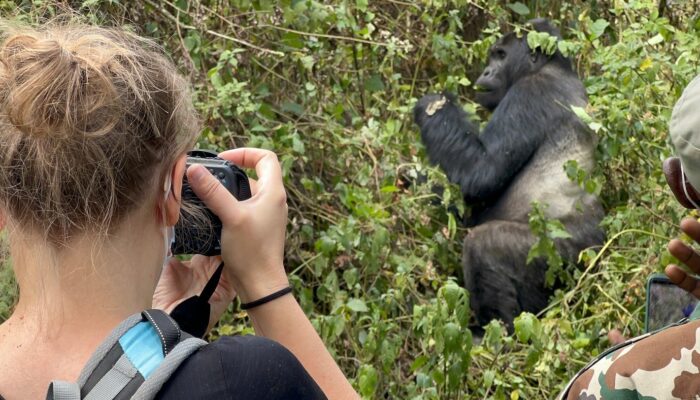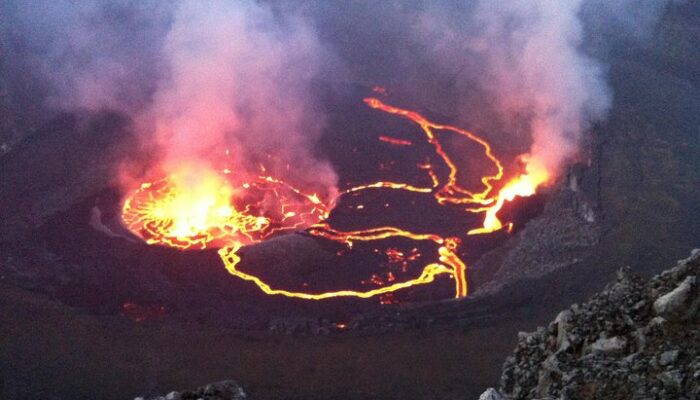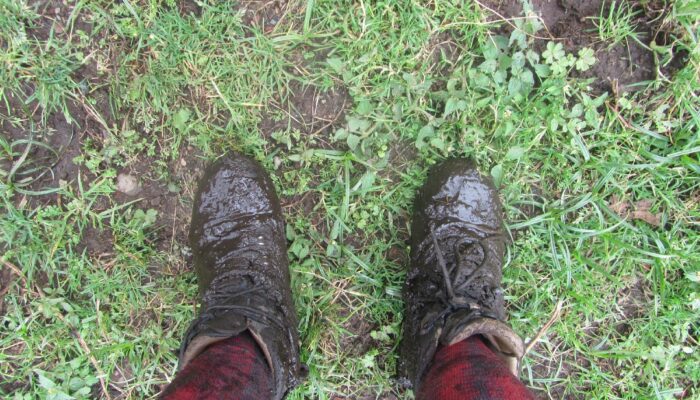Birding In Virunga National Park
Not only does the park has animals, but Virunga National Park’s Southern sector, has the numerous bird species which are endemic to the Albertine Rift as, Rwenzori turaco, Rwenzori batis, Archer’s ground robin, red-throated alethe, Kivu ground thrush, collared a palis, mountain masked apalis, dusky crimson-wing, Shelley’s crimson wing, red-faced woodland warbler, stripe-breasted tit, blue-headed sunbird, regal sunbird, Rwenzori double-collared sunbird, handsome spurfowl and strange weaver.
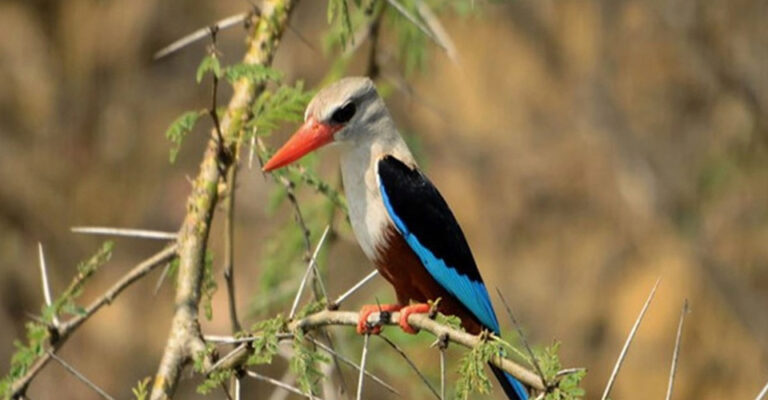
While Non-endemic bird species include Wahlberg’s eagle, African goshawk, African hobby, harrier hawk, common buzzard, mountain buzzard, hadeda ibis, grey-crowned crane, black-and-white-casqued hornbill, black-billed turaco, African olive pigeon, tambourine dove, blue-spotted wood dove, red-eyed dove, brown-necked parrot, red-chested cuckoo, olive long-tailed cuckoo, barred long-tailed cuckoo, Klaas’s cuckoo, Diederik cuckoo, blue-headed coucal, Narina trogon, white-headed wood hoopoe, white-necked raven, white-tailed crested flycatcher, African paradise flycatcher, white-eyed slaty flycatcher, African dusky flycatcher, white-tailed blue flycatcher, mountain oriole, speckled mousebird, cinnamon-chested bee-eater, grey-throated barbet, yellow-billed barbet, western tinkerbird, yellow-rumped tinkerbird, cardinal woodpecker, olive woodpecker, black saw-wing, Angola swallow, Alpine swift, mountain greenbul, yellow-whiskered greenbul, common bulbul, white-starred robin, Archer’s ground robin, white-browed robin-chat, African stonechat, rufous thrush, African thrush, olive thrush, grassland pipit, cinnamon bracken warbler, black-faced rufous warbler, mountain yellow warbler, brown woodland warbler, green sandpiper, Chubb’s cisticola, banded prinia, chestnut-throated apalis, grey-backed camaroptera, white-browed crombec, black-throated wattle-eye, chinspot batis, mountain illadopsis, grey-chested illadopsis, olive sunbird, bronze sunbird, malachite sunbird, collared sunbird, variable sunbird, yellow white-eye, Mackinnon’s shrike, Doherty’s bushshrike, Lühder’s bushshrike, northern puffback, mountain sooty boubou, tropical boubou, narrow-tailed starling, Sharpe’s starling, baglafecht weaver, black bishop, grey-headed nigrita, common waxbill, black-headed waxbill, bronze mannikin, black and white mannikin, pin-tailed whydah, African citril, streaky seedeater and thick-billed seedeater.
